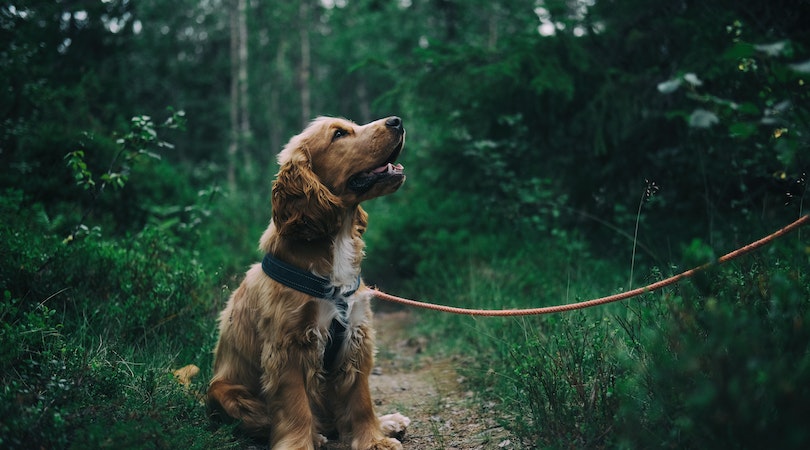Blogging
How to Start a Pet Blog that Makes Money

Are you a passionate pet lover with a story to share, or perhaps a desire to turn your furry friend into a financial opportunity? Starting a pet blog that not only indulges your love for animals but also generates income is a journey that’s both rewarding and paws-itively exciting!
In this guide, I will walk you through the essential steps, tips, and tricks on how to launch your own pet blog and turn your passion into profit. So, grab your favorite four-legged companion, and let’s embark on this adventure together!
The Impact of Pets on Mental Health
These positive effects of having a pet can contribute to your overall mental health, making them a great addition to your life and your pet blog:
1. Stress Reduction: Having a furry friend around can help lower stress levels. The soothing presence of a pet, whether it’s a dog, cat, or even a fish, can provide comfort during challenging times.
2. Emotional Support: Pets offer unconditional love and companionship. They’re great listeners and can be a source of emotional support, reducing feelings of loneliness and anxiety.
3. Increased Happiness: Interacting with pets, playing, and cuddling can trigger the release of feel-good hormones like oxytocin, which boosts your mood and overall well-being.
4. Routine and Responsibility: Caring for a pet can establish a daily routine and a sense of purpose. This can be particularly helpful for individuals dealing with depression or other mental health challenges.
5. Social Connections: Walking your dog or chatting with fellow pet owners at the park can lead to new friendships and a sense of belonging, which is crucial for mental health. Pets can be wonderful icebreakers for social interaction.
How to Start a Pet Blog that Makes Money
Here’s a step-by-step guide on how to start a pet blog that makes money:
1) Choose Your Niche
When embarking on your journey to create a profitable pet blog, selecting the right niche is crucial. Consider what you’re passionate about and what resonates with your audience. Are you drawn to dogs, cats, exotic pets, or pet care in general?
Think about what sets your blog apart from others. Your niche will be the foundation of your content, so choose wisely. Once you’ve identified your niche, delve deeper into it. Explore various topics, trends, and questions pet owners are seeking answers to.
This research will help you refine your niche and understand what type of content will keep your readers engaged. Whether it’s training tips, health advice, or heartwarming pet stories, narrowing down your niche is the first step toward building a successful pet blog.
2) Select a Domain Name
Your blog’s domain name is its online identity, and it’s essential to choose one that’s memorable, relevant, and reflects your niche. Keep it simple and avoid complicated words or phrases that are hard to spell. Ideally, your domain name should include keywords related to your niche.
For a pet blog, incorporating words like “pets,” “paws,” or “furry friends” can be a good start. Next, check the domain’s availability. You can use domain registration services to find out if your desired domain name is free. It’s wise to secure a .com domain if possible since it’s the most common and trusted extension.
Once you have found the perfect domain name that represents your blog, go ahead and register it. Your domain name is the first impression readers will have, so make it count.
3) Set Up Your Blog
With your niche chosen and domain name secured, it’s time to set up your pet blog. You do not need to be a tech whiz to do this; there are user-friendly platforms (like Blogger or WordPress) that make the process straightforward. Start by selecting a hosting provider that suits your budget and needs.
Hosting is where your blog’s files and data will be stored, making it accessible on the internet. After you’ve chosen a hosting provider, you can install a content management system (CMS) like WordPress. Most hosting services offer one-click installations, making it easy for beginners.
Once your CMS is installed, select a theme for your blog. Pick a theme that aligns with your niche and is visually appealing to your target audience. Customizing the theme to add your logo, colors, and unique touches is a great way to make your blog stand out.
4) Create Quality Content
Once your pet blog is up and running, the key to attracting and retaining readers is creating high-quality content. Start by planning a content calendar to ensure you post regularly. Consistency is crucial for building an audience. Consider what topics within your niche are both interesting and informative for your readers.
Whether it’s pet care tips, product reviews, or heartwarming pet stories, your content should be engaging and valuable. When creating content, pay attention to the writing style, grammar, and spelling. Well-written articles not only make your blog look professional but also keep your readers coming back for more.
Do not forget to include eye-catching images and videos to enhance your posts. Visual content can make your blog more appealing and shareable on social media, which can help increase your blog’s visibility.
5) Optimize Your Blog for Search Engines
To make money with your pet blog, it is crucial to optimize it for search engines (SEO). SEO helps your blog rank higher on search engine result pages, making it easier for people to find your content. Start by conducting keyword research to identify the terms and phrases related to your niche that people are searching for.
Use these keywords strategically in your blog posts, titles, and meta descriptions. Additionally, ensure your blog loads quickly and is mobile-friendly. Search engines favor websites that provide a seamless user experience. Make use of meta tags and descriptions to provide search engines with information about your content.
Internal linking, where you link to your own relevant blog posts, can also improve your blog’s SEO. Remember that SEO is an ongoing process, so regularly update your content and optimize it to stay competitive in search results.
6) Build a Social Media Presence
Having a strong presence on social media can significantly boost the success of your pet blog. Create profiles on popular platforms like Facebook, Instagram, Twitter, and Pinterest, and share your blog content regularly. Engage with your followers by responding to comments and messages, and consider running contests or giveaways to encourage user participation.
Each social media platform has its own best practices, so tailor your content to the platform’s strengths. For instance, Instagram is perfect for sharing visually appealing pet photos, while X (formerly Twitter) is great for quick updates and engaging with your audience.
As your social media presence grows, you’ll increase your blog’s visibility, driving more traffic and potential revenue.
7) Grow Your Email List
Another crucial foundational step in building a successful pet blog that generates income is growing your email list. An email list is like your direct line of communication with your audience. Start by offering something of value to your readers, like a free e-book on pet care tips or a weekly newsletter with the latest pet trends.
Make sure to prominently place an email signup form on your blog so that visitors can easily subscribe.Once you have a growing email list, you can engage your audience more effectively. Send them regular updates, exclusive content, and special offers.
This personal connection will help you build trust with your readers, and when you eventually promote products or services related to pets, they will be more likely to purchase through your affiliate links or buy your products.
8) Monetize Your Blog
Monetizing your pet blog is essential to make money from your passion. There are several ways to do this. One of the most common methods is affiliate marketing. Sign up for affiliate programs of pet-related products or services and promote them in your blog posts.
When readers make a purchase through your affiliate links, you earn a commission. Additionally, consider selling advertising space on your blog or using Google AdSense to display ads that are relevant to your content. You can also create and sell your own pet-related products, such as e-books, online courses, or merchandise.
Do not forget about sponsored posts; when your blog gains popularity, companies may approach you to write about their products in exchange for payment. However, always ensure that any monetization method you choose aligns with your blog’s values and provides value to your audience.
9) Network with Other Pet Bloggers
Connecting with other pet bloggers is a fantastic way to expand your reach and learn from experienced bloggers in the field. Join online communities and forums for pet enthusiasts and bloggers, and participate in discussions. Reach out to fellow bloggers in your niche and propose collaborations, guest posts, or joint projects.
Networking can help you gain exposure and insights, as well as access to opportunities you might not have found on your own. Collaborations can also include cross-promotions on social media or shared giveaways.
Engaging with other pet bloggers not only increases your visibility but also allows you to exchange ideas, strategies, and support, which can be invaluable in your journey to success.
Building relationships within the pet blogging community can provide you with valuable insights and support as you work to make your blog profitable.
10) Continuously Learn and Improve
Blogging is an evolving field, so it’s essential to continuously learn and improve your skills. Stay updated with the latest pet trends, blogging techniques, and SEO practices. Attend webinars, take online courses, or read books related to pet care and blogging.
As you gain more experience, you’ll become a better writer, photographer, and marketer, which will all contribute to your blog’s success. Regularly analyze your blog’s performance by tracking your website’s traffic, engagement metrics, and income. Use this data to identify what’s working and what’s not.
Adjust your content strategy accordingly, and do not be afraid to experiment with new ideas. Remember that building a profitable pet blog takes time and dedication, but with ongoing learning and a passion for pets, you can turn your blog into a money-making venture.
Latest Tech Innovations for Pets
The world of pet blogging has seen a surge in tech innovations that not only make life easier for pet owners but can also boost your blog’s appeal. Here are seven must-know advancements:
1. Smart Pet Feeders: These automated feeders ensure your pets are well-fed, even when you’re away, thanks to smartphone-controlled feeding schedules.
2. GPS Pet Trackers: Keep a close eye on your furry friends with GPS trackers that help you locate them in real-time, preventing those anxious moments when they wander off.
3. Pet Health Monitors: Get insights into your pet’s well-being with devices that track their vital signs, providing early alerts to potential health issues.
4. Interactive Pet Cameras: Stay connected with your pets through two-way video and audio, allowing you to interact with them remotely.
5. Pet Activity Trackers: Monitor your pet’s exercise and daily activity levels with wearable trackers, ensuring they stay happy and healthy.
6. Automated Litter Boxes: Make the chore of cleaning the litter box a breeze with self-cleaning systems that maintain a fresh environment for your cat.
7. Pet-Friendly Apps: Explore apps designed to help you manage your pet’s schedule, health records, and even connect with other pet enthusiasts in online communities.
Challenges of Pet Blogging and Their Solutions
Pet blogging can be a fun and rewarding venture, but it’s not without its challenges. Here are five common hurdles you might face, along with simple solutions to overcome them:
1. Finding Your Niche: With countless pet blogs out there, it can be tough to stand out. Solution: Focus on a specific pet niche, like exotic pets or senior dogs, to target a unique audience.
2. Generating Content Ideas: Writer’s block is common. Solution: Keep an idea journal, follow pet trends, and involve your own pets for inspiration.
3. Monetization Struggles: Earning money takes time. Solution: Start with affiliate marketing and sponsored posts, then explore selling pet-related products or services.
4. Building an Audience: Growing your readership can be slow. Solution: Use social media, engage with your audience, and collaborate with other pet bloggers.
5. Technical Challenges: Dealing with website issues or SEO can be daunting. Solution: Learn the basics or hire help, and consider user-friendly platforms like WordPress.
Conclusion
In conclusion, starting a pet blog that makes money is an exciting journey for any pet lover. Remember, it’s all about your passion, dedication, and creativity. By following the steps I’ve discussed, from choosing your niche to monetizing your blog, you can turn your love for pets into a rewarding online adventure.
So, don’t be afraid to take that first step, share your pet stories, and connect with fellow pet enthusiasts. With time and effort, you can create a pet blog that not only brings joy to your readers but also puts a smile on your face when you see those earnings start rolling in.
Recommended:
- How to Make Money with Your Pet: 10 Easy Ways
- How to Start Dog Food Business in Nigeria
- How to Make Money from Photography: 10 Best Ways
- How to Make Money on Snapchat: Fast Ways
- How to Sell on Facebook Marketplace: Simple Guide
📡Join Our Social Media Channels:
Facebook: theinfoWorth
YouTube: Ralph Finance













